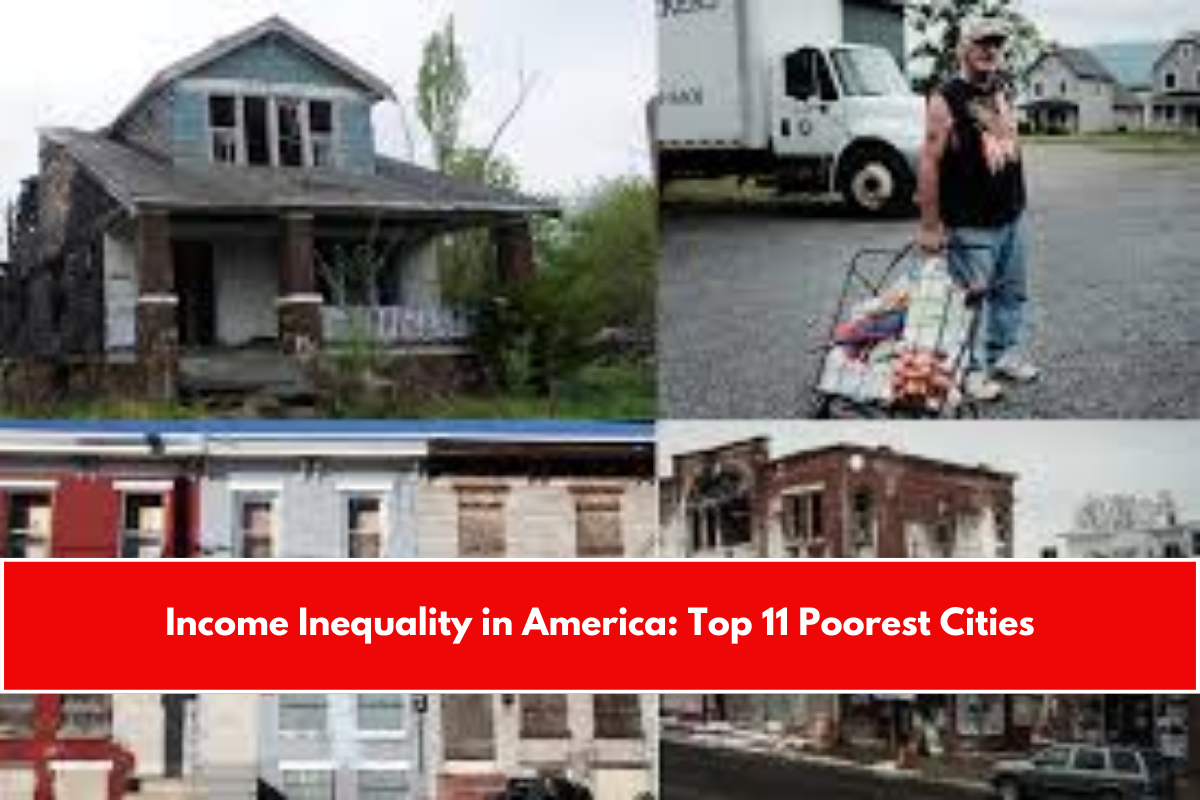The 11 Poorest Cities in America: A Deep Dive Into Urban Poverty
Living in a big city might seem exciting, with better job prospects, public services, and social life. But for millions of Americans, city life also comes with a high cost—and not everyone can keep up. Income inequality is often more visible in major cities, where the rich and poor live side by side.
According to data from the U.S. Census Bureau’s American Community Survey (ACS) and analysis by FindTheBest.com, some of the largest U.S. cities have extremely high poverty rates, low education levels, and significant income gaps. In fact, the 50 largest American cities have wider income gaps than smaller cities, as reported by the Brookings Institution.
Based on this data, here are 11 of the poorest cities in the United States, ranked by the percentage of households earning less than $25,000 annually and other key statistics.
11. Louisville, Kentucky
Incomes under $25,000: 29%
Bachelor’s degree holders: 26.9%
Incomes over $150,000: 6.4%
Population: 601,611
Louisville has suffered from long-term job losses in manufacturing and economic decline, especially in West Louisville. Poverty affects nearly 1 in 5 residents statewide. A local education effort called “55,000 Degrees” aimed to increase college graduation rates to help improve access to better-paying jobs.
10. Boston, Massachusetts
Incomes under $25,000: 29%
Bachelor’s degree holders: 43.9%
Incomes over $150,000: 13%
Population: 629,182
Boston has a high cost of living and significant income inequality. While it’s home to many top colleges and employers, many neighborhoods still struggle with poverty. Over 40% of Boston-area workers earn under $30,600 a year, based on earlier ACS data.
9. Indianapolis, Indiana
Incomes under $25,000: 29.1%
Bachelor’s degree holders: 27.3%
Incomes over $150,000: 5.2%
Population: 828,841
Indianapolis experienced a sharp rise in child poverty and income inequality after the 2008 recession. It also scored poorly in studies measuring economic mobility, meaning residents have fewer chances to move up the income ladder.
8. El Paso, Texas
Incomes under $25,000: 30.7%
Bachelor’s degree holders: 22.7%
Incomes over $150,000: 5.2%
Population: 660,795
In El Paso, low education levels and low-paying jobs are major concerns. Just 74% of adults have finished high school. The city’s median salary is below $47,000, and many young workers start at under $40,000.
7. Fresno, California
Incomes under $25,000: 31.4%
Bachelor’s degree holders: 20.3%
Incomes over $150,000: 6.1%
Population: 500,819
Fresno is an agriculture-driven city, where farm workers often earn minimum wage or less. This lack of job diversity leads to fewer opportunities for high-paying work. Economic inequality remains high.
6. Baltimore, Maryland
Incomes under $25,000: 33.2%
Bachelor’s degree holders: 26.8%
Incomes over $150,000: 6.4%
Population: 621,445
With rising costs, slow job growth, and high unemployment, Baltimore is still recovering. The city lost 5% of its population from 2000 to 2010. Poverty is widespread, and many residents work in low-wage service jobs.
5. Tucson, Arizona
Incomes under $25,000: 34.8%
Bachelor’s degree holders: 24.7%
Incomes over $150,000: 3.3%
Population: 523,278
Tucson’s economy heavily depends on tourism and seasonal jobs, which are often low-paying. The city still struggles with high unemployment and a slow housing recovery, limiting growth opportunities.
4. Memphis, Tennessee
Incomes under $25,000: 34.9%
Bachelor’s degree holders: 23.7%
Incomes over $150,000: 4.8%
Population: 650,932
Memphis faces some of the worst poverty and unemployment rates among U.S. cities. Half of the city’s children live in poverty, and racial inequality is a major issue. Public transport is poor, limiting access to better jobs.
3. Philadelphia, Pennsylvania
Incomes under $25,000: 36.4%
Bachelor’s degree holders: 23.9%
Incomes over $150,000: 5.3%
Population: 1.54 million
Known as the poorest big city in the U.S., Philadelphia has high levels of “deep poverty”—people earning less than 50% of the poverty line. Income often depends on where you’re born, and many neighborhoods lack opportunity.
2. Milwaukee, Wisconsin
Incomes under $25,000: 36.5%
Bachelor’s degree holders: 22.1%
Incomes over $150,000: 3.0%
Population: 596,459
Once a hub for manufacturing, Milwaukee continues to suffer from job losses and poverty. Unemployment remains high in many areas, especially among minorities. Experts say the city needs more jobs and economic investment.
1. Detroit, Michigan
Incomes under $25,000: 48%
Bachelor’s degree holders: 12.7%
Incomes over $150,000: 1.9%
Population: 706,663
Detroit is the poorest major city in the U.S.. Once the heart of the auto industry, the city declared bankruptcy in 2014. Today, it has tens of thousands of abandoned homes, high unemployment, and many families living without basic services. Only 12.7% of residents hold a bachelor’s degree, the lowest on this list.
Despite being one of the wealthiest countries, the United States has deep urban poverty. Cities like Detroit, Philadelphia, and Memphis are struggling due to a mix of job loss, low education, housing issues, and systemic inequality.
To reduce poverty, cities need targeted investment, improved education, better access to transportation, and higher-paying jobs. Without focused efforts, millions of Americans living in these cities will continue to face economic challenges every day.
FAQ Section:
Which is the poorest city in the U.S.?
Detroit, Michigan, tops the list with 48% of residents earning under $25,000 and the lowest rate of college education.
Why are some U.S. cities so poor?
Reasons include loss of manufacturing jobs, low education levels, racial inequality, and lack of economic development.
Is income inequality worse in big cities?
Yes. Larger cities often have wider income gaps between rich and poor, as shown by the Brookings Institution.
What’s the link between education and poverty?
Cities with lower college graduation rates often have higher poverty levels, due to lack of access to high-paying jobs.
How can cities reduce poverty?
By improving education, public transportation, affordable housing, and access to well-paying jobs.


















Leave a Reply